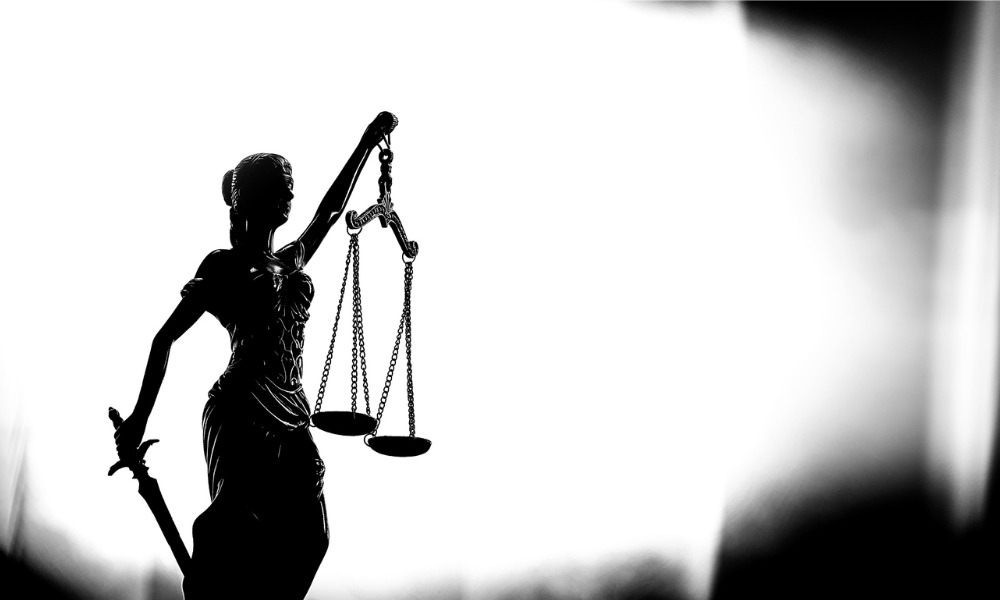Med mal lawyer urges change in how profession thinks about causation in tort

Sponsored content
Richard Halpern wrote his paper, "Causation on trial - A call for change in how we think about causation in Tort,” to clear up confusion around a difficult concept and also dispel the notion that there is more than one test at law for causation. While that quest may be simple in theory, it’s a lot more complicated in practice.
“Causation is a complex subject,” says Halpern, senior counsel and lawyer at Gluckstein Lawyers. “The message I want to get across, especially to lawyers who argue on the plaintiff side of cases, is that when you do your case you must have the but-for test as the only test in mind when proving causation. If you don’t do that you’re doing a terrible disservice to your client.”
Despite being the only legal test that determines cause-in-fact, the “but-for” language has led parties and courts astray by disregarding its foundation in the counterfactual, Halpern notes, which is a philosophy that focuses on the hypothetical. A counterfactual asks what would have happened if the wrongful conduct hadn’t occurred. That imaginary world is the world of causation, and it presents many challenges to judges, juries and lawyers, especially in medical malpractice litigation where there are multiple possible contributors to the harm the patient has suffered.
The problem with how causation is applied to tort law is that the causal question is asked of a specific wrongdoer, even when there are multiple wrongdoers involved, which can lead to a finding of no causation where causation is known to exist if you fail to ask the right questions. Did defendant A’s wrongful act cause the harm? That works if they’re the only wrongdoer in a simple scenario, but it doesn’t work when defendant A caused the harm together with defendants B and C.
"If you ask only whether defendant A’s conduct caused the harm, without considering the other causes, you may be led to the incorrect conclusion that defendant A did not cause the harm when you know as a matter of common sense he did,” Halpern says. “Plaintiff’s counsel often hasn’t paid sufficient attention to how they are going to prove a connection between wrongful conduct of multiple wrongdoers and the harm their client complains about.”
Lawyers must ask the but-for test in a way that’s going to result in the correct answer, and that can be very difficult when there are multiple factors that play a role in the outcome. In “Causation on trial - Necessity, sufficiency and the causal questions,” an addendum to his first paper, Halpern tackles how best to compose counterfactual questions in cases involving multiple factors and their causal relationship to a phenomenon. The concepts of necessity and sufficiency, which are explored in depth in the addendum, make the counterfactual question complex and challenging to compose, especially when posing the question to jurors.
“This is really where we get into trouble because how do you ask a question of the jury, who are six lay-people in a civil case, to make the causal determination where there are multiple factors at play in causing harm?” Halpern asks.
Lawyers must simplify how they pose the causal question, without the use of complicating language such as but-for, cause, contribute or counterfactual — “Nobody knows what a counterfactual is, I didn’t even know what it was until I wrote the paper,” Halpern notes — and while lawyers tend to ask questions of the jury in a double negative, the counterfactual should be expressed as a positive.
“In my second paper I give examples of how questions might be asked of juries in different scenarios, and I suggest lawyers should pose the same questions in their submissions to a judge,” Halpern says.
The challenges around caselaw are again compounded because judicial decisions are “all over the map on the issue,” and reading the caselaw “one would think there is
an alternative test called the material contribution to risk test,” specifically as defined in the Supreme Court of Canada’s decision in Clements v. Clements. But the material contribution test is incapable of addressing the shortcomings of the traditional but-for test, Halpern argues in his paper, and it is not actually a test of causation at all. It is more “an adjunct to an appropriately formulated counterfactual, to be subsumed within what we understand to be the but-for test.”
“It’s not a substitute, it’s just a policy decision that, if invoked, excuses proof of causation,” Halpern says. “When you dig deep into the material contribution test you find it is both unprincipled and unworkable."
Despite describing an alternative to the but-for test, the SCC has never actually applied an alternative, Halpern notes, adding in his view that means it’s time “to put aside any notion of a material contribution test and to accept that for virtually every kind of case you’re ever going to see in your career, the but-for test is going to apply.” It’s also time for trial judges to reject the material contribution to risk test and fall back on the only true test for cause in fact, he says.
Halpern presents his views at various conferences and seminars, and while he finds there is some controversy over whether or not Clements stands for the proposition he suggests — and nobody else is as blunt as he is in calling for the rejection of the idea of an alternative test, he adds — he will continue to advocate strongly that the but-for test is the only test.









